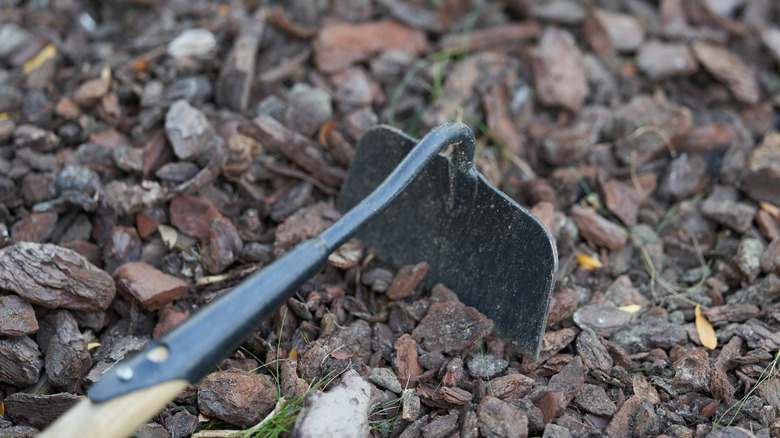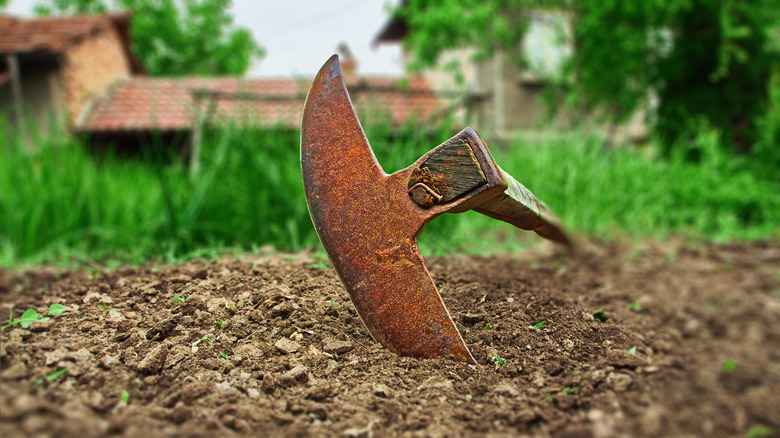How To Sharpen Your Garden Hoe (& Other Maintenance Tips)
A garden hoe is one of the most essential gardening tools, and it works as hard as you do. Chopping through roots or soil is no easy task, and just as your muscles get tired at the end of a day in the garden, your hoe's blade takes a beating. And, as you already know, a dull blade isn't going to do you any favors next time you're out weeding or hoeing — you'll only swing harder and curse more. On the other hand, a sharp blade makes quick work of eliminating invasive weeds and slicing hardened soil. To keep the garden hoe working effectively, you'll need to work on the blade properly at the first signs of dullness.
Now, you won't be using the hoe to perform surgery or shave (we hope), so it doesn't need to be razor-sharp. In fact, making the edge too sharp will weaken it. To sharpen it, you'll need two important tools — a hand file and a whetstone. It helps if you also have a vise to clamp the hoe, but if you don't, you can always place it on the ground and secure it with your foot. Once the hoe is firmly held in place, drag the hand file along the outer edge of the blade, from one end to the other. The file should stay at the same angle as the blade's bevel. Repeat this motion several times, or at least until the dents and imperfections are filed away. Then, use the coarse side of the whetstone to hone the outer edge of the hoe in an elliptical motion. Once you've worked over the entire cutting edge several times, turn the whetstone over and use its fine side to hone the blade a bit more. If your file has a fine side, you can use it instead of the whetstone for this step.
Maintenance best practices to keep your garden hoe in tip-top shape
Apart from sharpening, regular maintenance is a must if you want to keep your garden hoe as functional as possible. Cleaning, sanding, and lubrication are the other three tenets of garden tool maintenance that apply to hoes. Each time after you use the garden hoe, you should clean both the blade and the handle well, so no loose bits of soil are left. A stiff bristle brush will help you loosen the grime. Then you can wash the tool with warm water and a cloth, before drying it thoroughly.
Just like you sharpen the blade to eliminate dullness and imperfections, the hoe's wooden handle needs an occasional sanding to stay smooth. If you live in a warm, humid region, you may notice that the texture of the wooden handle becomes rough over time. This happens because the moisture in the air causes the grains to rise. To tackle this roughness, sand the handle with an 80-grit sandpaper first, then upgrade to 150 grit to finish.
During the course of maintenance, lubricate both the handle and the blade of your garden hoe. This step keeps the garden tool from rusting and prevents the wooden handle from cracking during bouts of dry weather. To lubricate the hoe, pour a bit of linseed oil on a cloth, then work the oil into both the wooden and metal components of the tool. Allow the oil to dry for a quarter of an hour, and wipe off any remaining liquid that may be dripping from the tool.

